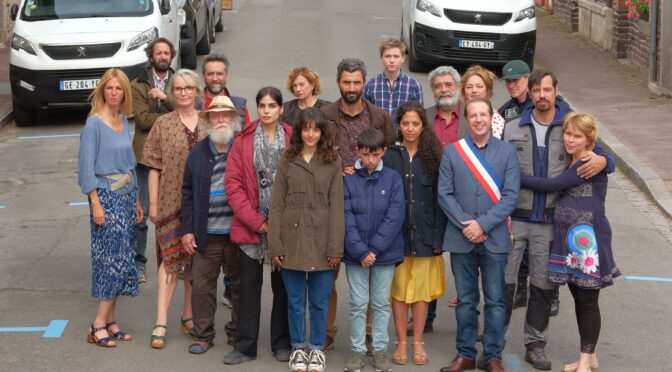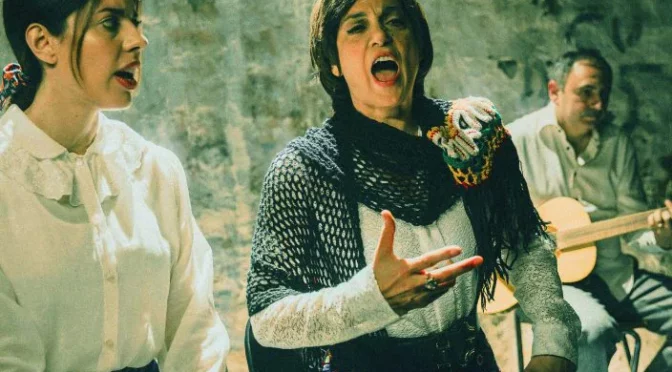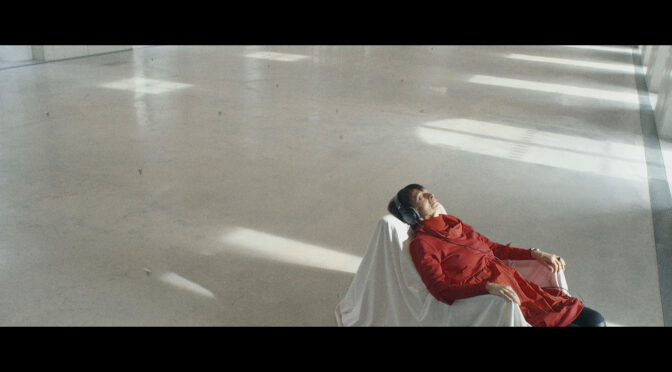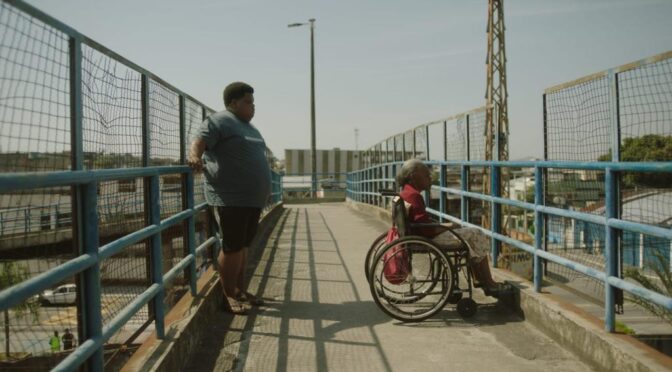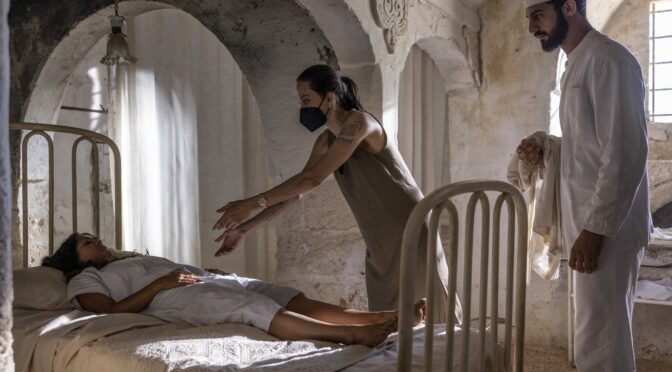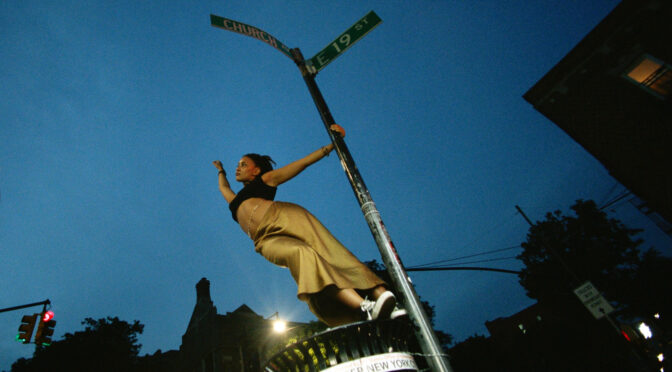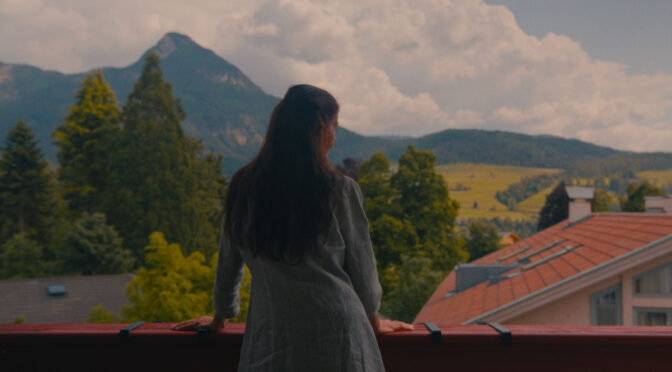Che cos’è secondo te il razzismo? Dietro una semplice domanda rivolta a dei bambini di una scuola elementare si possono nascondere secoli di discriminazioni e pregiudizi reiterati dalla paura dell’ignoto, di ciò che non si conosce o che, per ignoranza e ottusità, si teme di conoscere. Gli sguardi puri e innocenti dei bambini tendono tuttavia ad osservare il mondo in modo diverso rispetto agli adulti, trasformando una realtà spesso deludente nella più fantasiosa ed idilliaca delle favole. Ed è proprio con il classico “c’era una volta” che inizia Les Barbares di Julie Delpy: uno spettacolo teatrale, una farsa spietata attorno alla quale volteggiano dei personaggi al limite del surreale, maschere grottesche della società contemporanea.
Continua la lettura di “LES BARBARES” DI JULIE DELPYArchivi categoria: Torino Film Festival
“IN ULTIMO” BY MARIO BALSAMO
Article by Davide Lassandro
Translation by Giorgia Mazzù
A white corridor. A blinding, almost divine light. A choir of voices that seem to emanate from the beyond. Mario Balsamo introduces the Anemos hospice in Turin in his latest documentary, In ultimo—a concise yet poignant title that encapsulates the mission pursued with care and dedication by the hospice staff: guiding individuals toward understanding their illness and embracing that condition in which we all stand as equals. Every shot is overexposed and prolonged, a deliberate choice that transports the viewer into a suspended, timeless dimension entirely removed from ordinary reality.
Continua la lettura di “IN ULTIMO” BY MARIO BALSAMO“IN ULTIMO” DI MARIO BALSAMO
Un corridoio bianco. Una luce accecante, quasi divina. Un coro di voci che sembrano provenire dall’aldilà. Mario Balsamo presenta così l’Anemos di Torino nel suo ultimo documentario, In ultimo, un titolo conciso ma efficace nel descrivere una missione che gli operatori dell’hospice perseguono con premura e dedizione: condurre le persone verso l’elaborazione della malattia e l’accettazione di quella condizione di fronte alla quale siamo tutti uguali. Tutte le inquadratura sono sovraesposte e prolungate, una scelta che trasporta lo spettatore in una dimensione sospesa, senza tempo e completamente estranea alla realtà ordinaria.
Continua la lettura di “IN ULTIMO” DI MARIO BALSAMO“L’AMORE CHE HO” BY PAOLO LICATA
Article by Marilina Rita Monzo
Translation by Irene Pezzini
L’amore che ho (The love I’ve got) by Paolo Licata, presented at the 42nd Torino Film Festival, celebrates Rosa Balisteri, an emblematic voice of Sicily and a symbol of social struggle and resistance. The film, based on the novel of the same name by Luca Torregrossa – the singer’s nephew – goes beyond merely recounting her musical career, but it also fully explores her personal battles and the most private and painful moments of her life.
Continua la lettura di “L’AMORE CHE HO” BY PAOLO LICATA“L’AMORE CHE HO” DI PAOLO LICATA
L’amore che ho di Paolo Licata, presentato al 42° Torino Film Festival, celebra la figura di Rosa Balistreri, voce emblematica della Sicilia e simbolo di lotta e resistenza sociale. Il film, tratto dall’omonimo romanzo di Luca Torregrossa, nipote della cantante, non si limita al racconto della carriera musicale, ma esplora con intensità le battaglie personali e i momenti più intimi e dolorosi della sua vita.
Continua la lettura di “L’AMORE CHE HO” DI PAOLO LICATA“THE SILENCE OF LIFE” BY NINA BLAŽIN
Article by Alessandra Sottini
Translation by Federica Riccardi
On an ordinary day, Manca Košir explains to his family the secret of the enchanting cherry blossom: its beauty captivates the observer, but its brittleness and the passage of time make quickly fade that instant of wonder. The eternity of being is enclosed in the celebratory activity of life, day by day. Slovenian director Nina Blažin, who has experienced first-hand the loss of a loved one, feels close to the joyful and combative personality of the protagonist of The Silence of Life, filmed between 2019 and 2023.
Continua la lettura di “THE SILENCE OF LIFE” BY NINA BLAŽIN“THE SILENCE OF LIFE” DI NINA BLAŽIN
In un giorno come tanti, Manca Košir spiega alla sua famiglia il segreto dell’incantevole fiore del ciliegio: la sua bellezza cattura l’osservatore, ma la sua fragilità e lo scorrere del tempo fanno svanire velocemente quell’istante di meraviglia. L’eternità dell’essere, dunque, è conchiusa nell’attività celebrativa della vita, giorno dopo giorno. La regista slovena Nina Blažin, che ha vissuto in prima persona la perdita di una persona amata, si sente vicina alla personalità gioiosa e combattiva della protagonista di The Silence of Life, girato tra il 2019 e il 2023.
Un gioco di opposizioni, o un ossimoro lirico, sembra suggerire il titolo del film in concorso nella sezione documentari internazionali della 42ª edizione del Torino Film Festival. The Silence of Life sembra dirci che il silenzio non è sempre l’unica arma a disposizione contro l’inevitabilità della morte: colpita da un cancro alla gola, Manca contrasta questo destino avverso con specifici esercizi di pronuncia.
La macchina da presa indaga e osserva questa donna tanto tenace quanto più consapevole della sua condizione. Tuttavia, lo sguardo documentario non è “raffreddato” dalle consuete tecniche di pedinamento e di avvicinamento perché è Manca stessa a far vivere allo spettatore la propria storia: nonostante il peso opprimente del tempo che scorre, è lei ad abitare lo spazio con i gesti e le parole e a colorare l’ambiente con i suoi vestiti (predominano il rosso, il giallo e il rosa).
«La morte fa parte della nostra esistenza e dobbiamo prenderla come tale». Questa è dunque la traccia indelebile lasciata da Manca Košir.
Alessandra Sottini
“CITY OF WIND” DI LKHAGVADULAM PUREV-OCHIR
“La figura dello sciamano nasce nelle società primitive per risolvere problematiche di base per la sopravvivenza delle società. Egli tende ad assumere un comportamento di carattere estatico, ponte fra le energie spirituali e quelle terrene, canale della volontà divina e delle forze della natura che mette a disposizione dell’umanità attraverso l’amore e la comprensione”. Questa una descrizione accademica dello sciamano, figura protagonista di City of Wind (2023), opera prima della regista mongola Lkhagvadulam Purev-Ochir, presentato nella Sezione Orizzonti dell’80a Mostra del Cinema di Venezia.
Continua la lettura di “CITY OF WIND” DI LKHAGVADULAM PUREV-OCHIR“CITY OF WIND” BY LKHAGVADULAM PUREV-OCHIR
Article by Greta Maria Sorani
Translation by Federica Lozito
“The figure of the shaman arose in primitive societies to solve basic problems for the survival of societies. He tends to assume the behavior of an ecstatic character, acting as a bridge between spiritual and earthly energies, a channel for the divine will and for the forces of nature that he makes available to humanity through love and understanding”. This is an academic description of the shaman, the leading figure in City of Wind (2023), the feature debut by Mongolian director Lkhagvadulam Purev-Ochir, which was presented in the Horizons section of the 80th Venice Film Festival.
Continua la lettura di “CITY OF WIND” BY LKHAGVADULAM PUREV-OCHIR“NERO” BY GIOVANNI ESPOSITO
Article by Carlotta Profico
Translation by Silvia Matera
After committing a robbery, a bandit discovers he has extraordinary powers that will lead him to choose whether to save himself or others. In an era seemingly dominated by selfishness, Nero, the directorial debut of well-known actor Giovanni Esposito, focuses on sacrifice and caring for others.
Continua la lettura di “NERO” BY GIOVANNI ESPOSITO“NERO” DI GIOVANNI ESPOSITO
Dopo aver compiuto una rapina, un bandito scopre di avere poteri straordinari che lo porteranno a dover scegliere se salvare sé stesso o gli altri. In un’epoca che sembra dominata dall’egoismo, Nero, l’esordio alla regia del noto attore Giovanni Esposito, pone l’accento sul sacrificio e la cura dell’altro.
Continua la lettura di “NERO” DI GIOVANNI ESPOSITO“KASA BRANCA” BY LUCIANO VIDIGAL
Article by Romeo Gjokaj
Translation by Aurora Monteleone
The passing trains offer something unexpectedly precious to young Dé (Big Jaum). The movement of the carriages, their metallic and continuous rhythm, evokes the flow of life. For this reason, whenever he feels the need, Dé climbs the bridge overlooking the tracks with his grandmother Almerinda (Teca Pereira), who suffers from Alzheimer’s. Thus, both can silently watch the trains pass beneath them, giving themselves the illusion of being above their problems, if only for a brief moment.
Continua la lettura di “KASA BRANCA” BY LUCIANO VIDIGAL“KASA BRANCA” DI LUCIANO VIDIGAL
Il passaggio dei treni offre qualcosa di inaspettatamente prezioso al giovane Dé (Big Jaum). Il movimento dei vagoni, il loro ritmo metallico e continuo, ricordano il moto della vita; per questo motivo, quando ne sente il bisogno, Dé sale sul ponte che si affaccia sui binari insieme alla nonna Almerinda (Teca Pereira) malata di Alzheimer. Così, entrambi possono osservare in silenzio i treni scorrere sotto di loro, illudendosi di trovarsi al di sopra dei propri problemi, almeno per qualche istante.
Continua la lettura di “KASA BRANCA” DI LUCIANO VIDIGAL“WITHOUT BLOOD” BY ANGELINA JOLIE
Article by Tommaso Del Latte
Translation by Martina Bigi
With the movie Without Blood, it is clear that civil battles are still the focal point of Angelina Jolie’s directorial career. However, the result fails to achieve the emotional and narrative depth one might expect. Based on a novel by Turin-born writer Alessandro Baricco, the film promises to delve into the psyche of the characters, who are scarred by the violence of the war, but its occasional abstract approach and the lack of genuine emotional development make it an intellectual exercise rather than a truly engaging experience.
Continua la lettura di “WITHOUT BLOOD” BY ANGELINA JOLIE“WITHOUT BLOOD” DI ANGELINA JOLIE
Con Without Blood, Angelina Jolie continua a fare delle battaglie civili il centro della sua carriera da regista; tuttavia, il risultato non riesce a raggiungere la profondità emotiva e narrativa che ci si aspetterebbe. Tratto dal romanzo dello scrittore torinese Alessandro Baricco, il film promette di esplorare la psiche dei protagonisti segnati dalla violenza della guerra, ma il suo approccio a tratti astratto e la mancanza di un vero sviluppo emotivo lo rendono più un esercizio intellettuale che un’esperienza realmente coinvolgente.
Continua la lettura di “WITHOUT BLOOD” DI ANGELINA JOLIE“PARADIS PARIS” BY MARJANE SATRAPI
Article by Ludovico Franco
Translation by Federica Riccardi
Through the metropolitan network of Paris, the most faithful companion of human life roams about: death. Having become famous with Persepolis, Marjane Satrapi – illustrator and cartoonist even before being a director – assigns the role of absolute protagonist to the Grim Reaper in her latest film. In all its forms and declinations, we see her disrupt the lives of different characters, woven into a vast plot whose interweavings slowly emerge.
Continua la lettura di “PARADIS PARIS” BY MARJANE SATRAPI“PARADIS PARIS” DI MARJANE SATRAPI
Nel reticolo metropolitano di Parigi, si aggira la più fedele compagna della vita umana: la morte. Diventata celebre con Persepolis, Marjane Satrapi – illustratrice e fumettista ancor prima che regista – assegna alla Grande Mietitrice il ruolo di assoluta protagonista del suo ultimo film. In tutte le sue forme e declinazioni, la vediamo sconvolgere le esistenze di diversi personaggi, cuciti in una vasta trama di cui pian piano emergono gli intrecci.
Continua la lettura di “PARADIS PARIS” DI MARJANE SATRAPI“TENDABERRY” BY HALEY ELIZABETH ANDERSON
Article by Brigitta Mariuzzo
Translation by Martina Perrero
Tendaberry explores the signs that time, as it passes, leaves on our lives and the environment that sourrounds us. These marks may be tangible and visible to anyone, or they may manifest themselves in a less obvious way and remain in the background of our daily lives.
Continua la lettura di “TENDABERRY” BY HALEY ELIZABETH ANDERSON“TENDABERRY” DI HALEY ELIZABETH ANDERSON
Tendaberry esplora le tracce che il tempo, scorrendo, lascia sulle nostre vite e sull’ambiente che ci circonda. Questi segni possono essere tangibili e visibili a chiunque, oppure possono manifestarsi in modo meno evidente e restare sullo sfondo della nostra quotidianità.
Continua la lettura di “TENDABERRY” DI HALEY ELIZABETH ANDERSON“UN MILIONE DI GRANELLI DI SABBIA” BY ANDREA DEAGLIO
Article by Giorgia Andrea Bergamasco
Translation by Silvia Matera
While there are numerous accounts of the painful devastation caused by wars, genocides and natural disasters, less focus is given to the actions that capture the essential human effort towards rebirth and self-reconstruction.
Continua la lettura di “UN MILIONE DI GRANELLI DI SABBIA” BY ANDREA DEAGLIO
